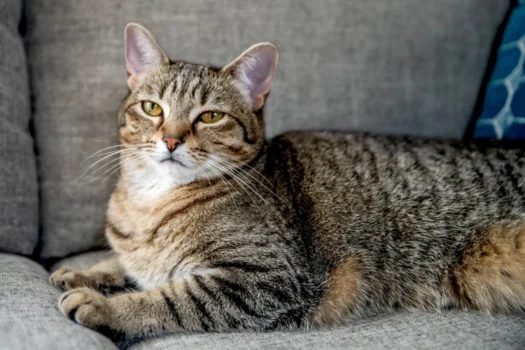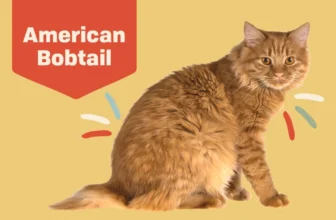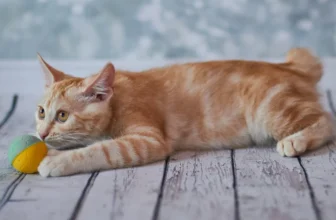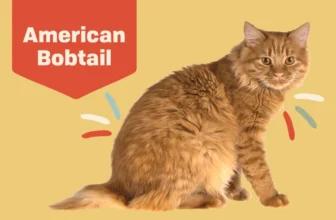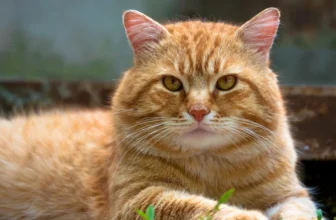The charming American Bobtail cat breed is well known for their distinctive and eye-catching coat patterns. Their unique Tabby pattern, in particular, is highly sought after by cat enthusiasts who appreciate their playful and friendly nature. But what exactly is a Tabby Pattern, and how does it appear in American Bobtail cats? In this article, we will delve into the fascinating world of feline genetics and explore the different types of Tabby patterns that exist, as well as the health concerns and inheritance of this stunning coat pattern. Join us as we unravel the mystery of the Tabby pattern in American Bobtail cats.
What is the Tabby Pattern?
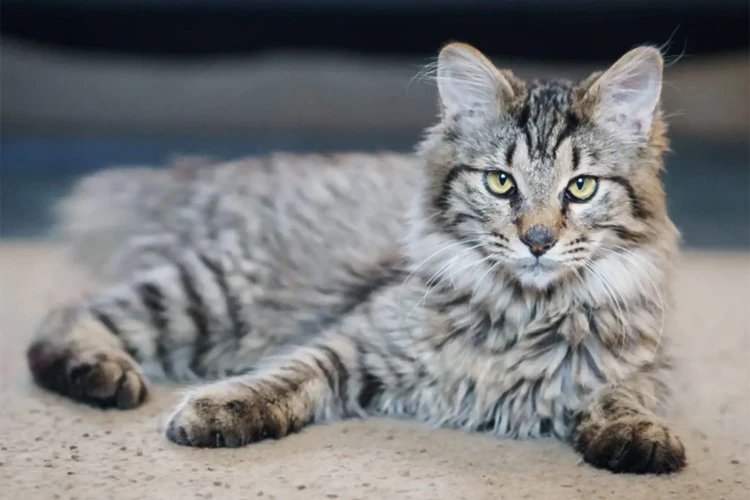
The Tabby Pattern is one of the most common coat patterns found in domestic cats. It is a fascinating pattern that has captivated cat lovers for centuries. What makes this pattern even more intriguing is the fact that it appears in American Bobtail Cats, a popular breed known for their unique bobbed tails. In this section, we will dive deep into the Tabby Pattern, its definition, types, and how it appears in American Bobtail Cats. If you’re a cat lover or considering adopting an American Bobtail Cat, this section is definitely worth exploring. For more information on American Bobtail Cat coat colors, check out this article. If you’re interested in the genetics behind coat colors, read our article on genetics and coat colors in American Bobtail Cats. And if you’re a proud owner of an American Bobtail Cat, don’t miss our article on Bobtail Cat Coat Care.
Definition of the Tabby Pattern
The Tabby Pattern is one of the most common coat patterns found in cats. It is characterized by bold stripes, dots, or swirling patterns and is widely recognized by people all over the world. According to the Cat Fanciers’ Association (CFA), the Tabby Pattern may also be referred to as “tiger stripes” due to its resemblance to a tiger’s coat pattern.
The Tabby Pattern is not a breed of cat but rather a pattern of their coat. Even though tabby cats may seem to have a similar appearance, they can come in various cat breeds and come in different shapes, sizes, and personalities. Some breeds, such as the American Bobtail Cat, are known for their unique version of the tabby pattern, which is a distinguishing feature of the breed.
There is no one specific Tabby Pattern. The pattern is broken down into four categories, which include the Classic Tabby, Mackerel Tabby, Spotted Tabby, and Patched Tabby. Each type of Tabby Pattern has a unique appearance, although they all share the same general characteristics of the pattern.
Different cat breeds may display unique variations of the Tabby Pattern. With American Bobtail Cats, for example, they display a wild-looking pattern that is fitting to their breed. The pattern has a natural appearance that is recessive and often will show aggression, strength and a sense of intelligence.
The Tabby Pattern is a pattern admired by many cat lovers and represents a unique characteristic in the feline community. It is important to note that the pattern does not determine breed or gender, and can be found in a variety of breeds. In the next section of this article, we will take a more in-depth look at the Tabby Pattern in American Bobtail Cats, highlighting its history and unique features.
If you are interested in learning more about American Bobtail Cats and their coats, you can head over to our article on American Bobtail Coats or learn about the spotting pattern of American Bobtail cats in Spotting American Bobtail Cats.
Types of Tabby Patterns
The Tabby pattern is one of the most popular coat patterns for cats, and there are several types of tabby patterns. The four most common types of Tabby patterns are: Classic, Mackerel, Spotted, and Patched.
| Tabby Pattern Type | Description |
|---|---|
| Classic | This type of pattern features bold, swirling stripes that often form a “bullseye” on the cat’s sides. Classic tabbies may have another layer of darker stripes over the bold ones, known as “ghost striping.” |
| Mackerel | Named after the fish, this pattern features thin, vertical stripes that resemble the fish’s skeleton. Mackerel tabbies may also have a dark line running down their spine known as the “mackerel stripe.” |
| Spotted | Instead of stripes, these cats have spots all over their coat. The spots can be large or small and irregularly shaped. |
| Patched | Also known as “torbie” or “tortoiseshell tabby,” these cats have a mix of tabby stripes and patches of red or cream color. Patched tabbies are more commonly seen in female cats as it is linked to the gene that determines a cat’s sex (X chromosome). |
While these are the most common types of Tabby patterns, there are other variations such as the Spotted Tabby and the Ticked Tabby. The Spotted Tabby pattern resembles the leopard’s spots, while the Ticked Tabby has individual hairs with bands of colors, similar to the Agouti gene in rabbits. It’s important to note that the Tabby pattern is not a different breed of cat but a coat pattern that can be found in many breeds, including the American Bobtail.
The Tabby Pattern in American Bobtail Cats
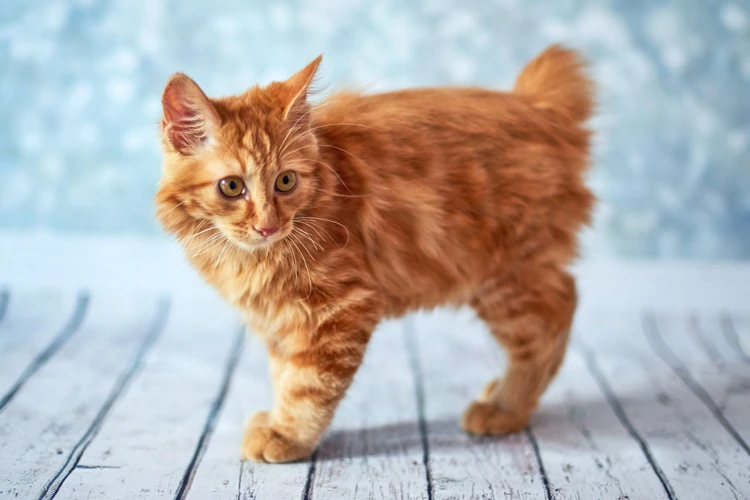
As you may know, American Bobtail cats are a unique and beloved breed among cat lovers. One of the distinguishing features of this breed is their beautiful tabby pattern which adds to their charm and appeal. In this section, we will delve deeper into the history of American Bobtail cats, their characteristics, and how the tabby pattern manifests in this specific breed. So, let’s explore the allure of the tabby pattern in American Bobtail cats together!
History of American Bobtail Cats
The history of American Bobtail Cats is as intriguing as their unique appearance. These cats originated from the United States, with the first sighting being documented in the 1960s. There are many theories about how the breed came to be, but the most widely accepted one is that they were a result of natural selection.
Legend has it that they are the descendants of cats that were brought over on the Mayflower from England. However, this story lacks concrete evidence. It is more likely that American Bobtails arose from the crossing of domestic cats with wild cats like Bobcats.
American Bobtails are known for their unique bobbed tail which is believed to be a result of a genetic mutation. This mutation gives the breed their distinctive appearance and wild-like look. The breed was officially recognized by The International Cat Association (TICA) in 1989.
These cats quickly gained popularity among cat enthusiasts because of their friendly, affectionate nature and their overall hardy constitution. They are also known for their intelligence and adaptability, making them easy to train and a great choice for families.
The history of American Bobtail Cats is shrouded in mystery but what is certain is that they have been bred since the 1960s, are the result of natural selection and are officially recognized by TICA. Their popularity, unique characteristics, and distinct physical appearance have made them a fan favourite among cat lovers.
| Origin | United States |
| First sighting | 1960s |
| Theory about origins | A result of natural selection |
| Legend | Descendants of cats brought over on the Mayflower from England |
| Believed ancestor | Bobcats |
| Distinctive feature | Bobbed tail resulting from genetic mutation |
| Officially recognized by | The International Cat Association (TICA) in 1989 |
Characteristics of American Bobtail Cats
The American Bobtail cat is a breed that has a distinctive appearance and personality. Here are some of the characteristics that define this breed:
- Bobtail: As the name suggests, the American Bobtail cat has a short tail that can range from a few inches to a third of the length of a normal cat’s tail. This is due to a natural genetic mutation, and it gives the American Bobtail cat a unique, wild appearance.
- Size: American Bobtail cats are a medium to large-sized breed, weighing anywhere from 7 to 16 pounds.
- Appearance: Apart from their short tails, American Bobtail cats have a muscular build and a shaggy coat. Their coat can come in various colors, patterns, and lengths, making each cat incredibly unique.
- Personality: American Bobtail cats are highly intelligent and playful, often engaging their owners in games of fetch and hide and seek. They are also known for their affectionate nature and ability to get along with other pets such as dogs and other cats.
- Vocalization: While American Bobtail cats are not overly vocal, they do have a distinct chirping sound that they use to communicate with their owners.
- Health: American Bobtail cats are generally healthy and not prone to any specific health issues. However, like any other breed, they can be susceptible to common feline health issues such as dental problems and obesity.
The American Bobtail cat is a unique and fascinating breed that is sure to capture the hearts of cat lovers everywhere. From their unusual appearance to their playful personality, there is no denying the charm of this incredible breed.
Appearance of the Tabby Pattern in American Bobtail Cats
American Bobtail cats are known for their distinctive appearance, especially when it comes to their beautiful tabby pattern. The tabby pattern in American Bobtail cats is one of the key features that make them stand out from other breeds.
Coat texture and color – The tabby pattern can appear on a variety of fur colors and textures in American Bobtail cats. The coat can be either short or long, and the tabby pattern can sometimes be more prominent on one type of coat than on the other. Some American Bobtail cats may have a shiny, smooth coat, while others have a fluffier, thicker coat.
Tabby M on forehead – One common feature of American Bobtail cats with a tabby pattern is a distinctive “M” shape on their forehead. This is formed by the markings on their forehead, which look like two curved lines that meet in the center, creating the shape of an “M”. This is a unique characteristic of the breed that sets them apart from other cats.
Eye color – American Bobtail cats with a tabby pattern can have a variety of eye colors, including green, blue, gold, and copper. Eye color can sometimes be linked to the color of their coat, with some cats having eyes that match or complement their fur. The combination of tabby pattern and eye color can create a truly unique appearance.
To summarize, American Bobtail cats with a tabby pattern have a distinct appearance that sets them apart from other breeds. Their coat texture and color, the “M” shape on their forehead, and eye color all contribute to their unique look. It’s no wonder that these cats are so beloved by cat lovers all over the world!
| Appearance Characteristics | Description |
|---|---|
| Coat texture and color | The tabby pattern can appear on a variety of fur colors and textures in American Bobtail cats. The coat can be either short or long, and the tabby pattern can sometimes be more prominent on one type of coat than on the other. |
| Tabby M on forehead | One common feature of American Bobtail cats with a tabby pattern is a distinctive “M” shape on their forehead. This is formed by the markings on their forehead, which look like two curved lines that meet in the center, creating the shape of an “M”. |
| Eye color | American Bobtail cats with a tabby pattern can have a variety of eye colors, including green, blue, gold, and copper. Eye color can sometimes be linked to the color of their coat, with some cats having eyes that match or complement their fur. |
Understanding the Different Types of Tabby Patterns
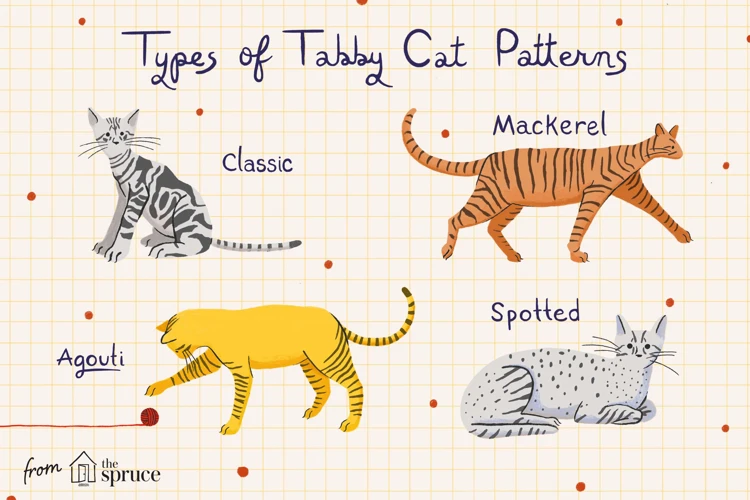
When it comes to tabby cats, not all patterns are created equal. In fact, there are several distinct tabby patterns that can appear in felines, each with its own unique characteristics. Understanding these patterns can help you better appreciate the beauty of your tabby cat or assist you in choosing your next furry companion. Let’s delve into the different types of tabby patterns and what sets them apart from each other.
Classic Tabby Pattern
The classic tabby pattern is one of the most well-known types of tabby patterns. This pattern is characterized by bold and thick swirling stripes that are usually in the shape of a bull’s eye. The bold stripes start from the cat’s spine and extend outwards towards the sides of the body. The markings on the face, legs, and tail are similar to those on the body. The classic tabby pattern is also known as blotched tabby, marbled tabby, or simply, the tabby pattern.
Table 1: Characteristics of the Classic Tabby Pattern
| Characteristics | Description |
|---|---|
| Background Fur | The background fur on a classic tabby is usually lighter in color, and the stripes are darker. |
| Markings | Swirling and looping bull’s eye patterns, with markings on the legs, face and tail similar to those on the body. |
| Head Markings | “M” shaped marking on the forehead, with two vertical lines between the ears. |
| Body Markings | Darker, thicker stripes on the back that taper outwards towards the sides of the body. |
| Eye Color | Eye color can vary greatly in classic tabbies. |
The classic tabby pattern is a dominant trait and is expressed when a cat has at least one copy of the “tabby” gene. This pattern can occur in a variety of colors, including brown, silver, red, cream, blue, and black. It is important to note that the intensity of the markings can vary greatly depending on the individual cat, and some classic tabbies may have more muted or subtle markings.
Table 2: Classic Tabby Pattern Colors
| Color | Description |
|---|---|
| Brown Classic Tabby | The most common classic tabby color, with rich brown stripes over a lighter background. |
| Silver Classic Tabby | Light silver stripes over a pale white or white background. |
| Red Classic Tabby | Orange or reddish stripes over a lighter background color. |
| Cream Classic Tabby | Pale cream or off-white background with light orange stripes. |
While the classic tabby pattern is often associated with American Bobtail cats, many other breeds can exhibit this beautiful pattern as well. This pattern has been observed in domestic shorthair cats, British Shorthair cats, and Maine Coon cats, among others.
Understanding the different types of tabby patterns, including the classic tabby pattern, can help you appreciate the stunning variety found in domestic cats. Whether you’re a cat lover or simply interested in feline genetics, learning more about tabby patterns can be a fascinating and rewarding experience.
Mackerel Tabby Pattern
The Mackerel Tabby Pattern is one of the most common and popular types of the Tabby pattern. This pattern is characterized by thin vertical stripes that run parallel along the cat’s spine down to their underbelly. The stripes are evenly spaced and narrow, resembling fishbones, hence the name “mackerel”.
Appearance: The Mackerel Tabby has narrow, vertical stripes that resemble a fishbone pattern. These stripes are usually evenly spaced and run parallel to the cat’s spine. The stripes may continue down to the cat’s underbelly, and they may also stretch across the cat’s legs and tail.
Color: Mackerel Tabby Cats can have a wide range of colors, including brown, grey, silver, red, and even blue. However, the most common color for Mackerel Tabbies is brown.
Markings: In addition to the vertical stripes running down their sides, Mackerel Tabbies may also have several smaller stripes on their forehead and cheeks. They may also have a distinctive “M” shape on their forehead, which is common among all types of Tabby cats.
Personality: Like most cats with Tabby patterns, Mackerel Tabbies are known for their playful and affectionate nature. They make great pets for families with children, as they are patient and friendly. Mackerel Tabbies are also known to be curious and adventurous, often exploring their surroundings with enthusiasm.
If you’re planning to adopt a Mackerel Tabby Cat, keep in mind that they require regular grooming to keep their coat looking healthy and shiny. They are also prone to obesity, so ensure you provide them with a balanced diet and enough exercise.
Here’s a table to summarize the key characteristics of Mackerel Tabby Pattern:
| Appearance | Narrow, vertical stripes resembling a fishbone pattern |
| Color | Brown, grey, silver, red, blue |
| Markings | “M” shape on forehead, smaller stripes on forehead and cheeks |
| Personality | Playful, affectionate, curious, adventurous |
If you’re looking for a friendly and lovable pet, a Mackerel Tabby Cat can be a perfect choice for you. With their charming personality, unique pattern, and playful nature, they make a great addition to any family.
Spotted Tabby Pattern
The Spotted Tabby Pattern in American Bobtail cats is a unique and interesting pattern. Rather than having stripes or patches, these cats have spots that range in size and shape. The Spotted Tabby Pattern is caused by the same gene as the Mackerel and Classic Tabby patterns, but it is expressed differently.
Characteristics of Spotted Tabby Pattern
Spotted Tabby American Bobtail cats have spots that can range from small speckles to large, irregularly shaped spots. The spots are evenly distributed and can be found all over their fur. The spots can be solid in color, but they can also have rings around them, giving them the appearance of bullseyes or target shapes.
Spotted Tabby Pattern vs. Leopard Print
At first glance, Spotted Tabby Pattern may look similar to a leopard print or jaguar print. However, the two are not the same. Leopard prints are typically symmetrical and uniform in their pattern, whereas Spotted Tabby Patterns are more random and varied in their spot placement, shape, and size. Additionally, the spots on an American Bobtail cat are usually only one color, unlike the many colors found in a true leopard print.
Spotted Tabby Pattern and Breeding
Breeding for Spotted Tabby Pattern in American Bobtail cats can be a bit more challenging than breeding for Classic or Mackerel Tabby patterns. This is because the Spotted pattern is controlled by a modifier gene that can be difficult to predict. Two tabby cats may produce a kitten with a Spotted Tabby Pattern, or they may not. It all depends on whether or not the modifier gene is present and how it interacts with the other genes involved in coat coloration.
Health Issues Related to Spotted Tabby Pattern
There are no known health issues related specifically to the Spotted Tabby Pattern in American Bobtail cats. However, it is important to note that American Bobtail cats, like all purebred cats, are prone to certain genetic health issues such as hypertrophic cardiomyopathy. It is recommended that breeders test their cats for these issues before breeding and that potential owners do their research and ask breeders about any potential health concerns.
The Spotted Tabby Pattern in American Bobtail cats is a unique and eye-catching pattern that adds to the charm and appeal of the breed. Whether you’re a breeder or simply an admirer of these cats, it’s important to appreciate the intricate beauty of their coats, as well as the genetics that make it all possible.
Patched Tabby Pattern
The Patched Tabby Pattern is also known as the Torbie or Tortie Tabby. It is a combination of tabby stripes and patches of red or cream fur. This unique combination creates a stunning and distinctive coat pattern that is highly sought after by cat enthusiasts.
Appearance
The Patched Tabby Pattern is characterized by a coat that consists of a mixture of tabby stripes and patches of red or cream fur. The pattern can vary greatly in intensity, with some cats having a predominantly red coat with just a few tabby stripes, while others may have a mainly tabby coat with only a few patches of red or cream.
To better understand the Patched Tabby Pattern, let’s take a look at the Tabby Pattern itself. A Tabby Pattern is characterized by stripes that run down the length of a cat’s body. These stripes can take on different shapes and sizes depending on the type of tabby pattern. In the case of the Patched Tabby Pattern, these stripes are combined with patches of red or cream fur.
Genetics
The Patched Tabby Pattern is not a simple pattern to produce genetically, as it requires multiple genes to be passed down from both parents. It is a sex-linked pattern, which means that it is carried on the X chromosome. Female cats have two X chromosomes, which means that they can inherit the Patched Tabby Pattern from both parents. Male cats, on the other hand, have only one X chromosome, which means that they can only inherit the Patched Tabby Pattern if their single X chromosome carries the necessary genes.
Popular Breeds
The Patched Tabby Pattern is not limited to any particular breed of cat, but it is commonly seen in American Bobtail cats, Maine Coon cats, and Scottish Folds. It is also present in domestic cats.
Here is a table summarizing the key aspects of the Patched Tabby Pattern:
| Pattern | Combination of tabby stripes and patches of red or cream fur |
| Appearance | Varies greatly in intensity |
| Genetics | Sex-linked pattern carried on the X chromosome |
| Popular Breeds | American Bobtail, Maine Coon, Scottish Fold, domestic cats |
The Patched Tabby Pattern is a unique and beautiful coat pattern that combines the tabby stripes with patches of red or cream fur. It is not limited to any particular breed of cat and is a sex-linked pattern that requires multiple genes to be passed down from both parents.
How is the Tabby Pattern Inherited?
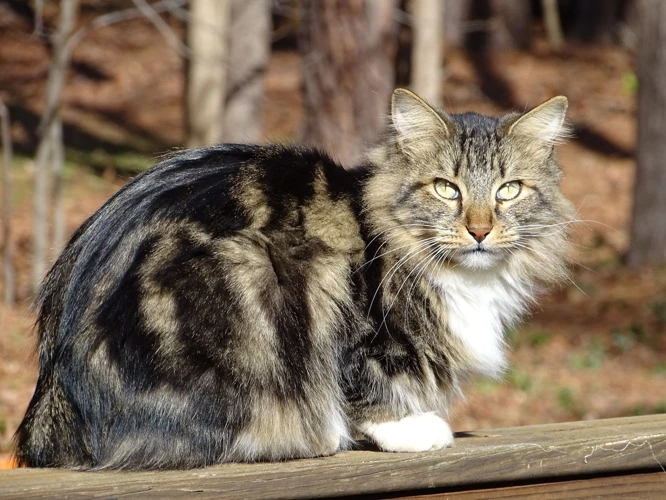
Understanding the genetics behind the tabby pattern in American Bobtail cats can be quite perplexing. But it’s important to know how this particular trait is inherited in order to better understand the different types of tabby patterns and their variations. In this section, we will explore the inheritance of the tabby pattern, including the specific genes involved, to shed light on this fascinating genetic phenomenon. So, let’s dive into the science of cat genetics!
Genetics of the Tabby Pattern
Understanding the Genetics of the Tabby Pattern
The tabby pattern is a dominant gene, meaning that if one parent carries the gene, there is a 50% chance that their offspring will also display the pattern. The gene responsible for the tabby pattern is called the agouti gene, and it determines the distribution of pigment in the fur.
The agouti gene has four different variations, or alleles, which create the different types of tabby patterns. These alleles are represented by the letters A, a, b, and D.
The dominant allele A produces the classic tabby pattern, while the recessive allele a produces a solid coat color. The b allele produces the spotted tabby pattern, and the D allele produces the mackerel tabby pattern.
Tabby Pattern Inheritance
When two cats with at least one A allele mate, their kittens will all have the classic tabby pattern. If one parent has an A allele and the other has a different allele, there is a chance that their kittens will display the mackerel, spotted, or classic tabby pattern.
When two cats with a b allele mate, their kittens will all have a spotted tabby pattern. However, when cats with one b allele and one A or D allele mate, their kittens may display a spotted or classic/mackerel tabby pattern.
When two cats with the D allele mate, their kittens will have a mackerel tabby pattern. If one parent has a D allele and the other has a different allele, there is a chance that their kittens will display the mackerel or classic tabby pattern.
It’s also possible for a cat to have a patched tabby pattern, which occurs when they have both tabby and non-tabby areas on their coat. This is a result of having two different versions of the agouti gene present.
Understanding the Tabby Pattern in American Bobtail Cats
Now that we’ve covered the genetics of the tabby pattern, let’s focus on how it appears in the American Bobtail cat breed. These cats have a naturally bobbed tail and a muscular, stocky build. They were first bred in the 1960s in the United States and are known for their friendly, outgoing nature.
The tabby pattern is very common in American Bobtail cats and can appear in any of the four variations. Their fur is usually thick and dense, with a medium to long length, and the tabby pattern enhances their unique appearance.
Tabby Pattern or Ticked Coat?
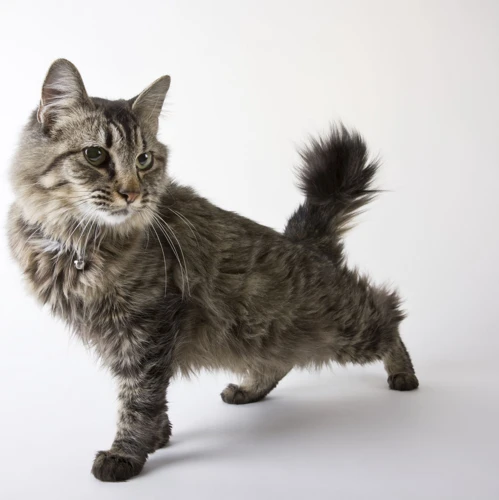
As a cat owner or enthusiast, you might have come across some confusion when it comes to different coat patterns. One of the most common confusions is between the tabby pattern and the ticked coat. While they may look similar to the untrained eye, there are some distinct differences that differentiate them. In this section, we will explore the differences between the two coat types and help you identify which one your American Bobtail cat might have. So, let’s delve in and unravel the perplexity of tabby patterns and ticked coats.
The Difference Between Tabby and Ticked Coat
When it comes to discussing the coat patterns of cats, it is common to hear the terms “tabby” and “ticked” used interchangeably. However, these patterns are not the same and have distinctive differences.
The Tabby Pattern is a coat pattern characterized by stripes, dots, or swirls of colors. The pattern may be in various colors such as brown, grey, black, or orange. The stripes usually run vertically, but they can also rotate around the cat’s body. These markings originate from the agouti gene, which causes different colors and patterns in specific areas of the fur.
The Ticked Coat pattern is quite different from the tabby pattern. It is characterized by individual hairs that have bands of different colors along their length. This creates a speckled or salt-and-pepper appearance on the cat’s coat. Ticked coats are more common in certain cat breeds like the Abyssinian, Somali, and Singapura.
To differentiate between the tabby and ticked coat patterns, the following table can be used:
| Tabby | Ticked Coat |
|---|---|
| Characterized by stripes, dots, or swirls of color | Characterized by individual hairs with bands of color |
| Color patterns run vertically or rotate around the cat’s body | Speckled or salt-and-pepper appearance on the cat’s coat |
| Originates from the agouti gene | More common in certain cat breeds |
It is essential to understand the difference between these two coat patterns, as mistaking one for the other can result in misidentification of cat breeds. While ticked coats are more common in certain cat breeds, like the Abyssinian, Somali, and Singapura, the tabby pattern is a lot more prevalent in most cat breeds.
Can Tabby Patterns Change Over Time?
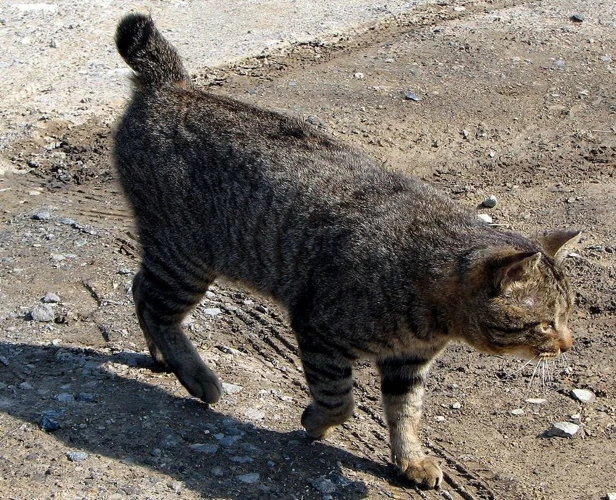
It is a common question among cat owners whether tabby patterns can change over time. The answer is yes, and it happens due to a phenomenon known as “ghost markings.”
What are Ghost Markings?
Ghost markings are spots or stripes on a cat’s fur that can show up temporarily or permanently, often in a pattern or color that is different from what the cat typically displays. These markings occur due to the interaction between the tabby gene and other genes responsible for fur color and pattern.
When Do Ghost Markings Appear?
Ghost markings can appear at any point in a cat’s life, although they are most commonly seen in kittens, especially during the first few weeks of life. These markings may be faint at first, but they often become more prominent as a kitten grows older. In some cases, it may seem like the tabby pattern is disappearing or changing, but it is actually just the result of the appearance of ghost markings.
Why Do Ghost Markings Appear?
Ghost markings are caused by the expression of recessive genes that may not be visible in a cat’s typical fur pattern. For example, a cat with a black and white tuxedo pattern may have genes for a classic tabby pattern that are not visible on its fur. If those genes are expressed due to a random genetic mutation, the cat may develop ghost markings that resemble a classic tabby pattern.
Will Ghost Markings Disappear?
Ghost markings are not permanent, and they may disappear as suddenly as they appeared. In many cases, the markings will fade over time, although in other cases, they may persist throughout a cat’s life.
Impact of Health on Tabby Patterns
It’s important to note that changes in a cat’s tabby pattern could also be indicative of underlying health problems. For example, hormonal imbalances or stress can cause a cat’s fur to change color or texture. If you notice any significant changes in your cat’s tabby pattern or fur, it’s essential to consult with a veterinarian to rule out any underlying health issues.
While tabby patterns can change over time due to ghost markings, it’s important to keep track of any changes in your cat’s fur to ensure that there are no underlying health problems. If you are concerned about changes in your cat’s fur or tabby pattern, consult with a veterinarian to come up with the best course of action.
Common Tabby Pattern Related Health Issues in American Bobtail Cats
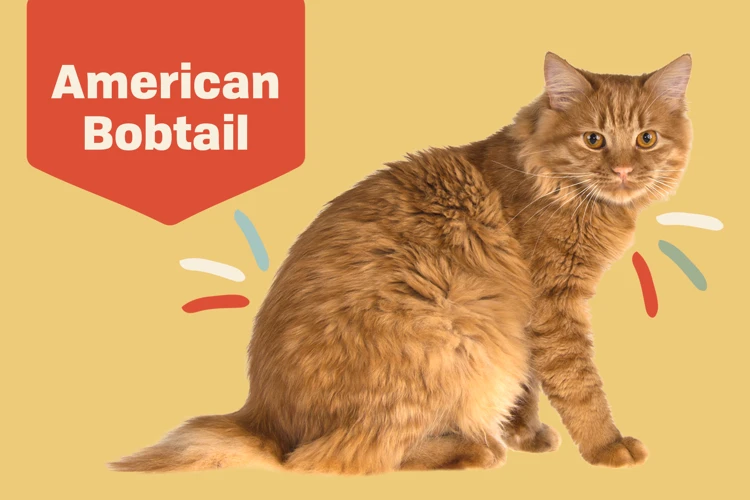
Ensuring the overall wellbeing of your American Bobtail cat is crucial for providing them with a healthy and fulfilling life. While this breed is generally healthy, there are some common health issues that may be related to their tabby pattern. These health concerns require timely attention and intervention to address potential complications. Understanding these health issues is important for Bobtail cat owners in providing the best possible care for their feline companions. Let’s dive into some of the common health issues related to the tabby pattern in American Bobtail cats.
Hypertrophic Cardiomyopathy
Hypertrophic Cardiomyopathy (HCM) is a common heart condition found in American Bobtail cats and other feline breeds as well. It is characterized by the thickening of the heart muscles, making it difficult for the heart to pump blood effectively. This can lead to a range of symptoms and complications and can also result in sudden death.
Symptoms of Hypertrophic Cardiomyopathy in American Bobtail Cats
Cats suffering from HCM may show the following symptoms:
| Symptom | Description |
|---|---|
| Shortness of breath | Difficulty in breathing, especially after physical activity |
| Fainting or collapsing | Weakness, lethargy or paralysis |
| Chest pain | Unusual meowing or wailing |
| Loss of appetite or weight loss | Reduced interest in food or water intake |
These symptoms can occur suddenly and often result in an emergency vet visit for the affected cat.
Causes of Hypertrophic Cardiomyopathy in American Bobtail Cats
HCM is believed to have a genetic basis, and it is common in certain breeds of cats, including American Bobtails. It is inherited in an autosomal dominant pattern, which means that even if the cat inherits the HCM gene from only one parent, there is a high chance of it being affected by the condition.
Treatment and Management of Hypertrophic Cardiomyopathy in American Bobtail Cats
Once diagnosed with HCM, treatment is focused on managing the symptoms and slowing down the progression of the disease. Veterinarians may prescribe medications to help reduce the thickness of the heart muscles, control heart rate and blood pressure, and reduce the risk of blood clots. As the condition progresses, the cat may require more critical care and monitoring.
It is essential to monitor an American Bobtail cat with HCM regularly, as the condition can become life-threatening without proper management. Cats with HCM should avoid stressful situations, which can exacerbate symptoms. Over-exercise and obesity should also be avoided.
Hypertrophic Cardiomyopathy is a severe heart condition that can affect an American Bobtail cat’s quality of life and lifespan. Early detection, proper treatment, and careful management are crucial in ensuring that affected cats can maintain a healthy and happy life.
Tabby Pattern FAQs
You may have some burning questions about the Tabby Pattern in American Bobtail Cats that are yet to be answered. We understand that the topic can be confusing and intricate, which is why we have compiled a list of frequently asked questions (FAQs) to put your curiosity to rest. Below are some of the most commonly asked questions that many cat enthusiasts have about the Tabby pattern in American Bobtail cats. So, let’s dig in and unravel the mysteries surrounding this unique feline coat pattern.
Are Tabby Patterns Found in other Cat Breeds?
Tabby patterns are commonly seen in American bobtail cats, but they are not limited to this breed. Tabby patterns are found in many other cat breeds as well, including the Bengal, Maine Coon, and British Shorthair.
It is interesting to note that while the tabby pattern is most commonly seen in domestic cats, it is also found in wild cats such as the African Wildcat and the Asian Leopard Cat.
Below is a table that shows some of the cat breeds that are known to have tabby patterns.
| Cat Breed | Tabby Pattern |
|---|---|
| American Bobtail | Classic, Mackerel, Spotted, Patched |
| Bengal | Marble, Spotted, Rosetted |
| Maine Coon | Classic, Mackerel, Tabby and White |
| British Shorthair | Classic, Mackerel, Spotted, Ticked |
| Siberian | Classic, Mackerel, Spotted, Ticked |
It’s important to note that while certain breeds are more likely to have tabby patterns, not all cats of a certain breed will have the pattern. Tabby patterns are also not exclusive to purebred cats – tabby cats can also be found in mixed breed cats.
Can Two Tabby Cats Produce Non-Tabby Kittens?
One perplexing question that may arise in the mind of a cat lover is whether two tabby cats can produce non-tabby kittens. The answer to this question requires a bit of understanding of genetics of the tabby pattern.
The tabby pattern is a dominant gene, which means that any cat with at least one allele for the tabby gene will show the tabby pattern in its fur. A cat can inherit one allele from each parent, and each allele can be either dominant (T) or recessive (t).
To answer the question, it’s important to first understand that a non-tabby kitten can only be produced if both parents carry two recessive alleles (tt). If both parents are tabby (TT or Tt), all kittens will show the tabby pattern.
However, if both parents are heterozygous (Tt), there is a 25% chance of producing a non-tabby kitten (tt), a 50% chance of producing a heterozygous tabby kitten (Tt), and a 25% chance of producing a homozygous tabby kitten (TT).
The answer to the question is yes. Two tabby cats can produce non-tabby kittens if both parents carry a recessive allele for the tabby pattern. It’s important to note that the recessive gene can be carried hidden for generations and then surprise everyone when two carriers breed producing a non-tabby kitten.
The inheritance of the tabby pattern is a fascinating topic that requires a basic understanding of genetics. It’s always interesting to observe kittens inherit the tabby pattern whether it expands, or contracts, and enjoy the diversity of multi-faceted characteristic traits.
| Tabby Parent | Tabby Parent | Kitten Possibilities |
|---|---|---|
| TT | TT | All kittens will be Tabby |
| TT | Tt | All kittens will be Tabby |
| TT | tt | All kittens will be Tabby |
| Tt | Tt | 25% Non-tabby, 50% Heterozygous Tabby, 25% Homozygous Tabby |
| Tt | tt | 50% Non-tabby, 50% Heterozygous Tabby |
| tt | tt | All kittens will be Non-tabby |
Can Tabby Cats be Identical?
It is very unlikely for two tabby cats to be identical. This is due to the genetic makeup that determines their tabby pattern. Even kittens from the same litter can have varying tabby patterns.
Here are some reasons why tabby cats cannot be identical:
- Genetic diversity: Although tabby fur patterns are determined by a single gene, there are different variations of this gene that can produce different tabby patterns. For example, a classic tabby pattern and a spotted tabby pattern are caused by different versions of the same gene. It is highly unlikely for two cats to have the exact same genetic makeup.
- Environmental influences: Even if two cats had the exact same genetic makeup, environmental factors such as diet, stress, and exposure to sunlight can affect their coats and make them slightly different.
- Random mutation: Occasionally, mutations can occur during gestation, causing changes in the cat’s fur pattern. This can result in a different pattern than what was inherited from the parents, making it almost impossible for two cats to be identical.
While it is possible for tabby cats to have similarities in their patterns, it is highly unlikely for them to be identical due to a combination of genetic and environmental factors.
Conclusion
After reading this article, we hope that you have gained a better understanding of the tabby pattern in American Bobtail cats. From the definition of the tabby pattern to the different types of tabby patterns and their appearances in American Bobtail cats, we have covered a lot of ground.
We also went over the genetics behind the tabby pattern and the difference between it and a ticked coat. You may have learned that tabby patterns can change over time, and that there are certain health issues that are commonly associated with tabby cats, such as hypertrophic cardiomyopathy.
If you are considering adding an American Bobtail cat to your family or are just curious about cat breeds, we hope this article has been informative and helpful. It is important to note that while tabby patterns are found in other cat breeds, American Bobtail cats have a unique history and set of characteristics.
In conclusion, the tabby pattern is a beloved trait among cat lovers and is found in a variety of cat breeds, including the American Bobtail. Understanding the tabby pattern, including its appearance, inheritance, and potential health issues, can help you appreciate this beautiful pattern even more.
Frequently Asked Questions
Yes, tabby patterns are found in many different cat breeds including the domestic shorthair, Maine Coon, and Bengal cats.
Yes, it is possible for two tabby cats to produce non-tabby kittens. This is because the tabby pattern is a dominant gene, but not every kitten will inherit it.
No, just like with humans, each cat is unique even among siblings. While two tabby cats may have similar patterns, they will not be identical in every way.
What is Hypertrophic Cardiomyopathy?
Hypertrophic cardiomyopathy is a type of heart disease that is common in American Bobtail cats. It causes the walls of the heart to become thickened, which can affect the cat’s ability to pump blood effectively.
How is Hypertrophic Cardiomyopathy Diagnosed?
Hypertrophic cardiomyopathy is usually diagnosed through a combination of physical exams, ultrasounds, and EKGs. Your veterinarian may also recommend genetic testing to determine if your cat is at risk for developing the disease.
What is the Difference Between Tabby and Ticked Coat?
A tabby coat has a distinct pattern of stripes or spots, while a ticked coat has individual hairs that are banded with different colors, giving the appearance of a more solid color.
How Long Has the American Bobtail Cat Breed Been Around?
The American Bobtail breed is relatively new, with the first American Bobtail cat being recorded in the 1960s. However, the breed has quickly gained in popularity and is now recognized by most cat registries.
Can You Predict the Tabby Pattern of a Kitten?
It is not always possible to predict the tabby pattern of a kitten, as it depends on the genetics of its parents. However, if both parents have a tabby pattern, it is more likely that the kitten will also have a tabby pattern.
Is the Tabby Pattern More Common in Male or Female Cats?
The tabby pattern is equally common in male and female cats, and it is not linked to either gender specifically.
Can Tabby Patterns be Different on Different Parts of the Cat’s Body?
Yes, it is possible for a cat to have a different type of tabby pattern on different parts of its body. For example, it might have a classic tabby pattern on its back and a spotted tabby pattern on its belly.

